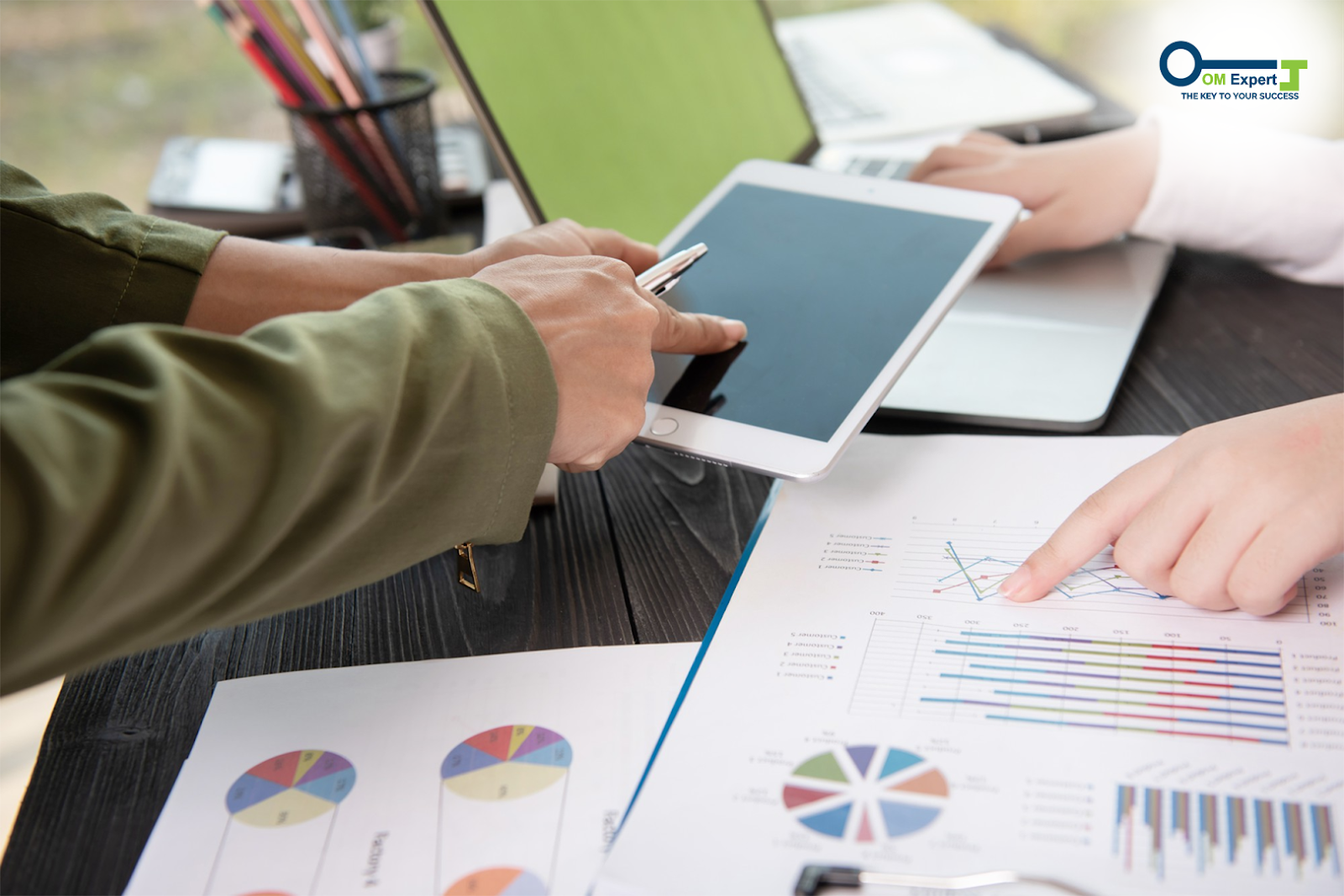The Future of GST Payment - Digital Trends You Should Know

Paying taxes has always been a daunting task in India, especially for small businesses, freelancers, and companies that have to deal with many invoices. When GST came into being, it brought many indirect taxes under one roof, simplifying the structure of taxation. However, this transformation is not just about collecting taxes, but more so about how people pay and manage those taxes in a digital manner. The promise of the future of GST payment stands on quicker processing, greater automation, and simpler ways online that reduce stress, save time, and keep finances accurate for every class of taxpayers.
Today, most taxpayers are aware of online filing for GST returns, but the process for making payments requires manual entry of data, constant verification, and repeated calculations. The Future of GST payment is about removing such extra steps and enabling direct integrations between the digital platforms and the GST system. Rather than manually typing out line items into the returns, the system will automatically pull information from invoices, bank records, or accounting software. This would make compliance relatively easier for the taxpayer without needing complete dependence on manual efforts or hired accountants.
Managing GST becomes more complicated with the growth of business. Companies are always faced with hundreds of monthly transactions, branches, and different tax rates. With a manual system, the chances of errors leading to penalties and problems in reconciliation cannot be avoided. The future of GST Payment: Smart technology updates data in real time. This is going to bring down the number of corrections, mismatched entries, and painful audits. Digital transformation is not restricted to paying better; it’s changing the way businesses function.
Why Digital GST Payment Matters Today: -
Technology is affecting every other aspect of finance-be it digital wallets or online banking. Taxation is no exception to this, as any payment going online ensures speed, security, and reliability for users. The future of GST payment now makes compliance more transparent, where any person with a phone or laptop can pay the taxes without necessarily visiting a bank or filling out long forms. This change in format also invites participation from small business owners who found it all confusing earlier.
Digital tax payment also helps the government in tracking the financial activity more precisely. It reduces fraud, tax evasion, and duplicate invoices since the data is stored safely and verified electronically. When all systems are integrated with each other, then tax officers will not use any paperwork; instead, they will view real-time information online. That is why authorities encourage features like GST e-invoicing, auto challan generation, and cellular phone-based payment systems. The Future of GST payment will make these systems completely integrated and interlinked, which will result in the smooth continuation of business.
Evolution of GST Payments over Time

Payments in the initial phase of GST were mostly manual. Users would generate challans online but were physically going to banks to make payment entries. Gradually, online gateways took over all physical submissions. The system today does support GST online payment, net banking, card payments, and UPI. That’s a big improvement, though users still need to do the calculation of values, preparation of data, and upload of documents manually.
It replaces the semi-digital setup that is in use today, while the Future of GST payment will be fully automated. The next step will enable:
Automation Features:
- Software to auto-calculate tax liability using GST software tools
- Real-time syncing with invoices for seamless GST compliance online
- Single-click payments without forms via the GST e-payment system
- Machine-based digital reconciliations are increasing efficiency in paying GST
This shift will turn compliance from a monthly task to a seamless, continuous process that updates automatically in the background. Users would not have to maintain separate track records of the calculations; it would be automatically handled by the tax system.
Mobile-First GST Payments
Phones have become central to digital finance in India: People pay bills, shop online, transfer money, and invest directly from mobile apps. Soon, tax payments will move to the same platform. The Future of GST payment will introduce mobile-optimized systems whereby users can pay their taxes anywhere, anytime, without having to log in through a desktop portal.
Mobile Payment Features:
- GST mobile payment via UPI and integrated apps
- Challan generation directly from applications using GST payment apps
- Deadline notification reminders that ensure improvement in trends of compliance about GST
- QR-code-based invoice scanning for tracking GST digital payment trends
- Auto-populate data from cloud storage through digital GST solutions
It will help gig workers, delivery personnel, freelancers, and small shop owners running businesses on the go. They need not access a computer to finish their compliance work.
Automation Will Reduce Manual Errors
One of the leading causes related to tax issues results from manual calculations. A simple error in typing can change the entire tax liability, mismatch returns, and/or trigger notices. The Future of GST payment will resolve this through GST payment automation, which captures data from invoices and bank records, calculates taxes, and schedules payments automatically.
Automation Benefits:
- Reduced human error and more accurately calculated taxes through the use of GST accounting software
- Faster monthly filing for online tax filing
- Invoices cannot have duplicate entries through the GST portal payment
- Smooth coordination between finance teams with GST payment platforms
This change is especially helpful for companies operating multiple GST numbers throughout the states. Instead of having to calculate each branch, everything will now be handled by software through a central dashboard with the use of GST digital transformation tools.
Data Will Be More Secure
The number one priority will be cybersecurity, with the increasing trend of digital payments. Users need to feel safe while sharing banking details online. Similarly, the Future of GST payment will provide encrypted GST payment gateways, multi-level authentication, and fraud detection systems.
Security Features:
- Biometric verification for the security of GST payment
- Tokenized transactions for the GST electronic payment system
- Artificial Intelligence fraud alerts using GST fintech solutions
- Data storage nodes, security
- Government-verified payment gateways
A secure system builds confidence, ensuring more taxpayers adopt digital methods instead of adhering to traditional systems.
Integration With Smart Business Tools

While most businesses embrace digital tools for handling accounting, expenses, payroll, and invoicing, many still continue to use the GST portal solely for uploading records. The Future of GST payment will integrate business tools with compliance platforms for GST payment integration.
If an e-invoice gets generated, the tax liability would be captured by the GST system itself, and a challan would get generated automatically. The companies, therefore, will not have to transfer data manually from their software to the GST portals. This avoids mismatches at the time of audit and return filing.
Integration Benefits:
- Small traders with basic billing applications using GST payment methods
- Bulk ordering by e-commerce sellers
- Large firms tracking multi-city transactions using GST payment technology
- Service providers billing recurring customers
While users run their businesses normally, the software will silently manage the tax calculation.
GST and the Digital Economy of India
India is going cashless, with digital payments and financial technology being the drivers. GST is part of that revolution. When tax systems go digital, they support transparency, improve compliance, and link business records with government networks. The Future of GST payment will help India build a digital-first economy where financial data flows automatically from banks to tax systems.
Digital adoption thus proves to be mutually beneficial for the governments and the taxpayers. Policies can be improved more quickly as authorities track data electronically. It helps detect loopholes in taxation, fraud, and economic trends. Data drives governance nowadays; digital taxation systems play a key role in policymaking and economic development through their GST digital economy initiatives.
Challenges Still in the Queue
Even with the improvement in the system, the taxpayers still face challenges:
- Rural area internet issues
- Low digital awareness among small traders
- Difficulty in filing procedures
- Multiple tax slabs demand careful calculations about the future of paying taxes
- Lack of integration across various software tools for updating GST payments
These gaps need to be addressed if digital transformation has to be fully realized. The future of GST payment will evolve faster when training, accessibility, and technology reach every business.
Education and Digital Training Will Be Important
Besides, technology alone is not sufficient; people have to learn to work with it. Most small traders and a few traditional ones prefer handwritten invoices. Some fear digital systems or feel they lack technical skills. Support programs and simpler user interfaces would help improve the situation.
Education Initiatives:
- Government training workshops on GST compliance trends
- Multilingual mobile applications for digital adoption of GST
- Helplines for small business queries
- Local community support centers
- Free digital learning courses
With more individuals learning how to handle online tools, the transition will go smoother and be more widespread.
Future Predictions for GST Payments
The future of GST payment would bring several expected shifts:
- Single-click automated payments through GST payment platforms
- Digital identity verification for the GST online system
- Instant invoice-to-payment workflows with GST e-invoicing
- AI suggestions for tax savings through the use of GST financial technology
- Blockchain-based audit trails for GST payment reforms
These enhancements will convert the monthly GST chore into a seamless and automatic affair. Enterprises will not have to think about compliance, with all the processes that are quietly carried on behind the scenes.
Conclusion
The Indian taxation system has moved to a new digital era, where the payment systems are automated, secure, mobile-friendly, and highly integrated with business software. This means that the process, starting from invoice generation to payment verification, will become smoother, faster, and more accurate. GST payments’ future is not only going to make transactions simpler but change the very fabric of how businesses operate, plan finances, and manage compliance.
To stay ahead of the competition, organizations have to keep themselves informed about emerging trends, adopt technology early, and prepare a full-fledged digital approach towards taxation. As digital transformation hastens, platforms like OM Expert would help users become knowledgeable and future-ready in compliance matters.
